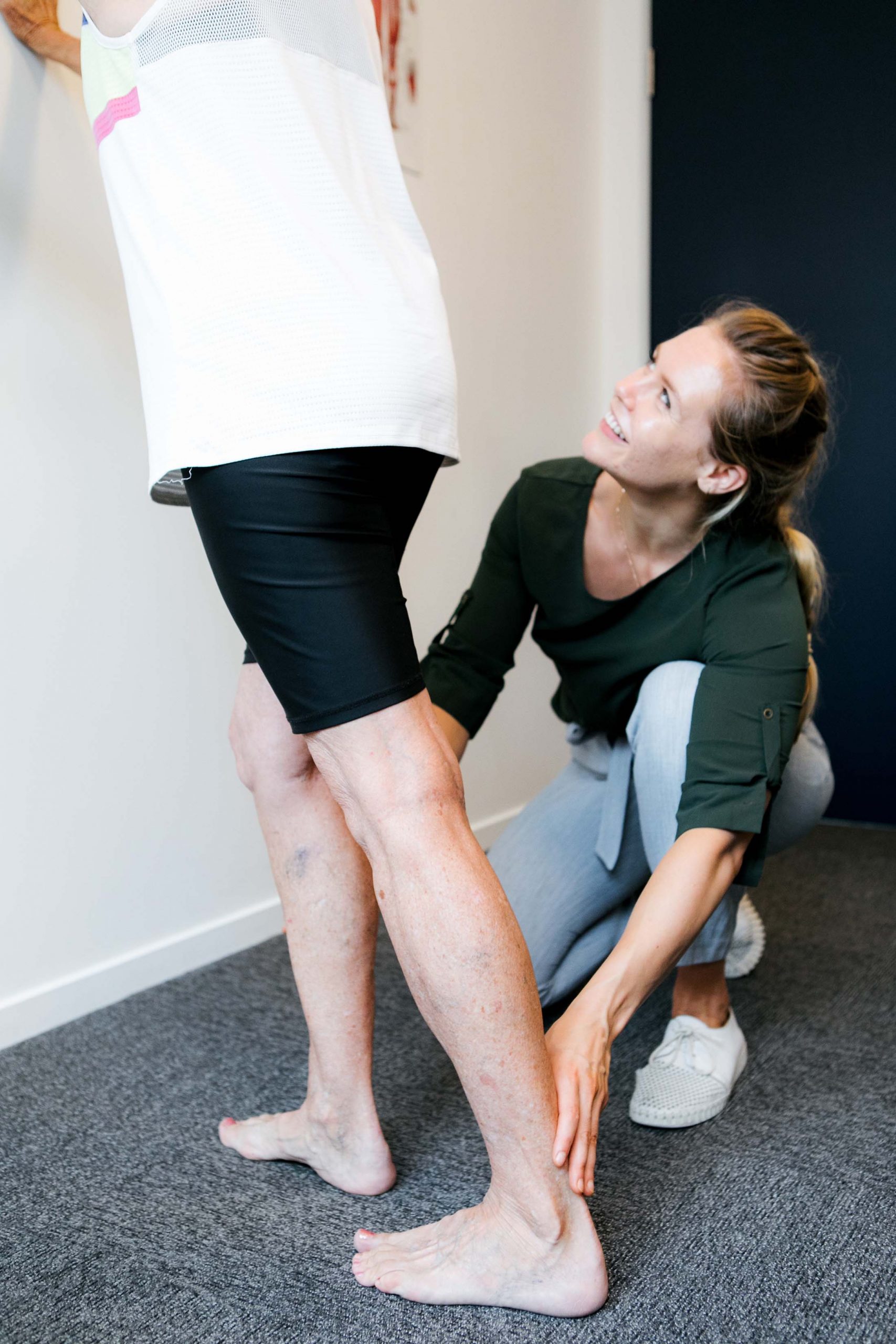
It’s morning, and the alarm clock has just told you it’s time to get out of bed. Another few minutes won’t hurt. You check your emails, social media sites, and you even ring your mum to see how the dog slept last night… basically anything to delay putting your feet on the ground and taking those first steps to get the day started. And it’s because of this pain you’ve been getting on the bottom of your heel every morning for the last few weeks. And it’s getting worse… Time to see your osteopath!
There are a few things that can cause pain on the bottom of the heel, but the most common cause is a condition named plantar fasciopathy (pronounced ‘fash-ee-op-a-thee’ — previously known as plantar fasciitis (pronounced ‘fash-ee-i-tis’)).
What is plantar fasciopathy?
Plantar fasciopathy is an overuse condition affecting the plantar fascia. The plantar fascia is a layer of soft tissue that stretches along the bottom of the foot, from the heel bone to the metatarsal bones in the front of the foot. It helps to provide stability to the arch of the foot and is similar in make-up to a tendon (the things that attach muscle to bone). If too much stress is placed on this structure, over time the tissue can degenerate, weaken, and start to give you pain. The pain is commonly felt where the plantar fascia attaches into the heel bone.
Risk factors
Scientific research suggests there are a few groups of people who are more prone to developing plantar fasciopathy. These include:
- Runners
- People who are over-weight and lead a sedentary lifestyle and/or spend long periods standing for work (e.g. a factory worker)
Important things to consider with these at-risk groups include:
- Foot alignment and arch height: Having a very low or high arch or having excessive or not enough movement in the foot joints can lead to the development of this problem.
- Amount of training: Increased levels of training can place greater stress on the plantar fascia more regularly.
- Footwear: Wearing certain types of footwear when training can lead to an increased risk of plantar fasciopathy (i.e. wearing athletics spikes, or the wrong footwear for your foot type).
- Muscle strength and flexibility: Decreased strength in the muscles that control toe movement, as well as weakened and tight calf, hamstring and gluteal muscles are all associated with higher rates of plantar fasciopathy.
Signs and symptoms
The signs and symptoms of plantar fasciopathy include:
- Pain at the bottom of the heel
- Pain that appears as a gradual onset
- Pain felt first thing in the morning (i.e. taking those first steps out of bed in the morning is classic!)
- Pain that decreases with activity, but increases again afterwards (early stages)
- Pain that increases with activity and pain felt at night (latter stages)
- Pain felt after periods of prolonged rest during the day (i.e. being sat at your desk for 2-3 hours and then getting up again)
- Tight calf, hamstring and gluteal muscles
- Weak muscles that help to support the arch of the foot
- Stiff or over-flexible foot and ankle joints
Diagnosis and treatment
First things first, if you have heel pain that sounds similar to the picture we have painted above, make an appointment with us now (you know what to do… call us on 07 5451 1599. Once we have asked the relevant questions, performed the necessary tests, and are convinced that the issue stems from the plantar fascia, we will formulate a plan with you with short and long-term goals to reach within a set time.
Initial hands-on treatment will include a combination of massage, joint mobilisation and manipulation, and dry needling of the lower limb muscles with the aim of correcting any mechanical issues that are playing a role in this issue. Depending on the presentation, we may also use tape around the foot and ankle to provide support and reduce the stress being placed on the tissues. Other treatment will include advice on weight loss (if required), training regimen, footwear, and exercise prescription that helps to lengthen and strengthen tight and weak muscles. Some cases of plantar fasciopathy may require a foot orthotic or in-sole to provide extra support to the foot whilst wearing shoes, we have podiatrist we refer to that can help with this..
Plantar fasciopathy is a tricky condition to treat which may require ongoing treatment for several months. We will endeavour to get you pain-free in the shortest time possible, so we recommend following all advice to a T, which may include a reduction in the amount of training you are doing at present. When you start to hit goals and we see improvements being made, we’ll have you back up to your full training program before you can say “plantar fasciopathy”.
Imaging?
People regularly ask if they need imaging for such an issue, but the majority of cases of plantar fasciopathy can be diagnosed with a thorough case history and physical assessment. This is where we excel! Imaging is there for cases that do not respond to treatment and for those instances where we need to rule out a more serious problem.
If you need help with heel pain, please call us today on 07 5451 1599 to book your appointment. Let’s have you putting your best foot forward, ASAP! 👌
